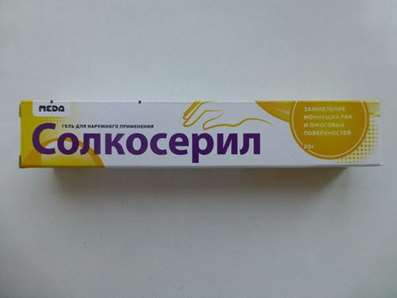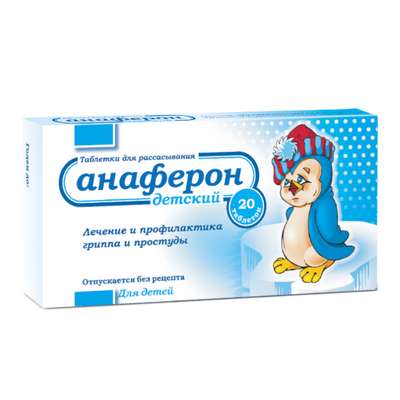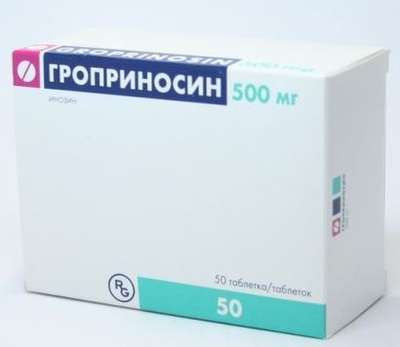Instruction for use: Piroxicam (Piroxicamum)
I want this, give me price
Pharmacological group
NSAIDs – Oxycams
Nosological classification (ICD-10)
J06 Acute upper respiratory infections of multiple and unspecified
Frequent colds viral diseases, Infections of the upper respiratory tract, Acute respiratory disease influenza character, for colds Pain, Acute colds,Cold, respiratory infection,Seasonal colds, Pain in infectious and inflammatory diseases of the upper respiratory tract, Bacterial infections of the upper respiratory tract, Bacterial respiratory infections, Viral disease of the respiratory tract, Viral respiratory tract infections, Inflammatory disease of the upper respiratory tract, Inflammation of the upper respiratory tract disease, Inflammation of the upper respiratory tract illness with difficult sputum, Inflammatory airway disease, Secondary infections with colds, Shortness of sputum in acute and chronic respiratory diseases, Upper respiratory tract infection, Infections of the upper respiratory tract, Respiratory Tract Infections, Infections of the respiratory tract and lungs, Infectious-inflammatory diseases of the upper respiratory tract, Infectious-inflammatory diseases of the upper respiratory tract and ENT-organs, Infectious-inflammatory diseases of the upper respiratory tract in children and adults, Infectious-inflammatory diseases of the upper respiratory tract, Infectious inflammation of the airways,respiratory infection, Qatar upper respiratory tract, Catarrh of the upper respiratory tract, Catarrhal disease of the upper respiratory tract, Catarrhal symptoms of the upper respiratory tract, Coughing with a cold, SARS, ARI, ARI with rhinitis phenomena, Acute respiratory infection, Acute infectious and inflammatory disease of the upper respiratory tract, Acute respiratory disease, Sore throat or nose, Respiratory viral infections, Respiratory diseases, Respiratory infections, Recurrent respiratory infections, Secondary infection with influenza, cold in the chest, Feverish condition with flu usitis, acute sinusitis, genyantritis, purulent sinusitis
M06.9 Other specified rheumatoid arthritis
Rheumatoid arthritis, Pain syndrome in rheumatic diseases, Pain in rheumatoid arthritis, Inflammation in rheumatoid arthritis, Degenerative forms of rheumatoid arthritis, Children's rheumatoid arthritis, Exacerbation of rheumatoid arthritis, Acute articular rheumatism, Rheumatic arthritis, Rheumatic polyarthritis, Rheumatoid arthritis, Rheumatic polyarthritis, Rheumatoid arthritis, Rheumatoid arthritis, Rheumatoid arthritis of active course, Rheumatoid periarthritis, Rheumatoid polyarthritis, Acute Rheumatic Arthritis, Acute rheumatism
M10 Gout
Exacerbation of gout, Acute articular attack with gout, Acute gouty attack, Gouty attack, Recurrent gout
attacks, Chronic gout
M13.9 Arthritis, unspecified
Arthritis,Purulent arthritis (non-infectious), acute Arthritis,Pain in acute inflammatory diseases of the musculoskeletal system,Pain in chronic inflammatory diseases of the musculoskeletal system,The pain in osteoarthritis, Inflammation in osteoarthritis, Inflammatory arthropathy, Inflammatory and degenerative joint diseases, Inflammatory disease of the musculoskeletal system, Inflammatory joint disease, Inflammatory diseases of the musculoskeletal system, destructive arthritis, The disease of the musculoskeletal system, Diseases of the musculoskeletal system, Diseases of the musculoskeletal system and connective tissue, Infections musculoskeletal system, monoartrit, Non-infectious arthritis, rheumatic arthritis, Osteoarthritis, Acute inflammation of the musculoskeletal tissue, Acute inflammatory diseases of the musculoskeletal system, Acute inflammatory condition of the musculoskeletal system, Acute arthritis, Acute osteoarthritis, Post-traumatic osteoarthritis, Reactive arthritis, Chronic inflammatory diseases of the joints, Chronic arthritis, Chronic inflammatory arthritis, Chronic inflammation of the inner layer of the joint capsule, Chronic inflammation of the joint capsule,Chronic inflammatory disease of the joints, Exudative arthritis
M15-M19 Osteoarthritis
M45 Ankylosing spondylitis
Ankylosing spondylarthrosis, Marie-Strumpel disease, Ankylosing spondylitis, Pain syndrome in acute inflammatory diseases of the musculoskeletal system, Pain syndrome in chronic inflammatory diseases of the musculoskeletal system, Bechterew's disease, Ankylosing spondylitis, Diseases of the spinal column, Rheumatic spondylitis, Bechterew-Marie-Strumpel disease
M77.9 Other unspecified
Capsule, Periarthritis, Tendonitis, Tendopathy, Periarthropathy
M79.0 Other unspecified rheumatism
Degenerative rheumatic disease, Degenerative and rheumatic diseases of the tendons, Degenerative rheumatic diseases, Localized forms of rheumatism of soft tissues, Rheumatism, Rheumatism with a pronounced allergic component, Rheumatism of the articular and extraarticular, Rheumatic attack, Rheumatic complaints, Rheumatic diseases, Rheumatic disease of the spine, Relapses of rheumatism, Articular and extra-articular rheumatism, Articular and muscular rheumatism, Articular rheumatism, Articular syndrome with rheumatism, Chronic rheumatic pain, Chronic articular rheumatism, Rheumatoid diseases, Rheumatic diseases of the intervertebral disc
M79.1 Myalgia
Myofascial pain syndromes ,Pain syndrome in musculo-articular diseases, Pain syndrome in chronic inflammatory diseases of the musculoskeletal system, Pain in the muscles, Tenderness of muscles, Muscular soreness in severe physical exertion, Painful conditions of the musculoskeletal system, Pain in the musculoskeletal system, Pain in the muscles, Pain at rest, Muscle aches, Muscle pain, Musculoskeletal pain, Myalgia, Muscle pain, Muscle pain at rest, Muscle pain, Muscular pain of non-rheumatic origin, Muscle pain of rheumatic origin, Acute muscle pain, Rheumatic pain, Rheumatic pains, Myofascial syndrome, Fibromyalgia
M79.2 Neurology and neuritis, unspecified
Pain syndrome with neuralgia, Brachialgia, Occipital and intercostal neuralgia, Neuralgia, Neuralgic pain, Neuralgia, Neuralgia of intercostal nerves,Neuralgia of the posterior tibial nerve, Neuritis, Neuritis traumatic, Neuritis, Neurological Pain Syndromes, Neurological contractures with spasms, Acute neuritis, Peripheral neuritis,Post-traumatic neuralgia,Severe pain of a neurogenic nature, Chronic neuritis, Essential neuralgia
N94.4 Primary dysmenorrhea
Primary functional dysmenorrhea, Pain in primary dysmenorrhea, Primary algodismenorea, Menstrual cramps
R52.1 Constant unrestrained pain
Pain syndrome in oncology practice, Pain syndrome pronounced, Pain syndrome in malignant neoplasms, Pain syndrome in cancer, Pain syndrome with tumors, Pain syndrome in cancer patients, Pain in malignant neoplasms, Pain in malignant tumors, Pain in tumors, Pain in cancer patients, Pain in bone metastases, Pain in cancer, Malignant pain syndrome, Intensive chronic pain, Intensive pain syndrome, Intensive non-curable pain syndrome, Intensive chronic pain syndrome, Unrestrained pain, Unrestrained pain, Tumor pain, Post-traumatic pain syndrome, Severe pain, Chronic pain, Chronic Pain Syndrome
R52.2 Other constant pain
Pain syndrome, rheumatic origin, Pain at vertebral lesions, Pain in the chamber, Pain for burns, Pain syndrome weak or moderate, Perioperative pain,Moderate to severe pain, Moderately or weakly expressed pain syndrome, Moderate to severe pain, Ear pain of otitis, Neuropathic pain, neuropathic pain
T14.0 Surface injury of unspecified body region
Abrasions, Scratch, Skin Wounds, Wounds of soft tissues, Hematoma, Hematoma of traumatic origin, Hematomas, Hematomas of muscles, Hematomas of soft tissues, Healing of the skin, Bruise, Bruising due to sprains and bruises, Microtrauma, External bruises, Small combing, Superficial hematoma, Superficial damage to the skin and mucous membranes, Subcutaneous hematoma, Post-traumatic hematoma, Post-traumatic disturbance of microcirculation, Skinness of the skin, Traumatic plexus lesions, Injury, Contusion of soft tissues, Joint bruise, Traumatic bruises, Traumatic injury, Primary treatment of surface contaminated wounds, Abrasion, Bruise
T14.3 Dislocation, sprain and damage to the capsular-ligamentous apparatus of the joint of the unspecified area of the body
Painful stretching of muscles, Pain and inflammation in tension, Dislocation of dislocation, Degenerative changes in the ligamentous apparatus, Edema due to sprains and bruises, Edema after interventions for sprains, Damage and rupture of ligaments, The musculoskeletal system is damaged, Damage to ligaments, Damage to the joints, Ligament ruptures, Tendon tendons,Ruptures of the tendons of muscles,Stretching, Crick, Stretching of the muscle, Sprain, Tension of the tendons, Extensions,Stretch muscles, Sprains, Tension of the tendons, Injury of the musculoskeletal system, Injuries to the joints, Injuries of capsule-articular tissues, Injuries of the osteoarticular system, Injuries to ligamentsInjuries to the joints, Joint wounds, Stretching of the ligamentous apparatus, Habitual stretching and tearing
T14.9 Injury unspecified
Pain syndrome after trauma, Pain syndrome with injuries, Pain syndrome with trauma and after surgery, Pain in case of injury, Pain of a traumatic nature, Joint pain with injuries, Postoperative and post-traumatic pain, Pain in case of injury, Pain of a traumatic origin, Severe pain syndrome of traumatic origin, Deep tissue damage, Deep scratches on the trunk, Closed injury, Minor Household Injuries, Minor skin damage, Violations of the integrity of soft tissues, Uncomplicated trauma, Extensive traumatic injury, Acute pain syndrome of traumatic origin, Edema with trauma, Postponed sports injuries, Post-traumatic pain, Soft tissue injuries, Joint wounds, Sports injuries, Injury, Traumatic pain, Traumatic pains, Traumatic infiltrate,Injuries to sports
Code CAS 36322-90-4
Characteristics Piroxicam
White or white with a slightly yellowish tinge crystalline powder. Soluble in chloroform (1: 100), in warmed ethanol and methanol (1: 1000), it is difficult to dissolve in water.
Pharmacology
Pharmacological action - anti-inflammatory, antipyretic, antiaggregational, analgesic.
Inhibits the activity of cyclooxygenase (COX (cyclooxygenase) -1 and COX-2), reduces the synthesis of PG (prostaglandins), incl. PGE1, PGE2, PGE2alpha and thromboxanes. Suppresses phagocytosis, platelet aggregation.
After intake is well absorbed from the digestive tract (gastrointestinal tract), Cmax is achieved after 3-5 hours. Equilibrium concentration in the blood is established within 7-12 days. Binding to plasma proteins is 97-99%. Metabolized in the liver (oxidized and conjugated), the main metabolites - 5-hydroxypyroxicam, N-methyl-benzenesulfonamide, etc. - are pharmacologically inactive. T1 / 2 for about 50 hours, may increase with liver disease. It is excreted by the kidneys and the digestive tract (in the urine it is determined in 2 times more amount than in the feces), mainly in the form of glucuronides (5% excreted unchanged). Passes through the placenta and penetrates into breast milk. Do not cumulate.
Promotes the alleviation of pain syndrome, symptoms of inflammation in any way of use. With articular syndrome weakens or stops inflammation and pain in the joints at rest and during movement, reduces morning stiffness and swelling of the joints.
Studies of subacute and chronic toxicity performed on rats, mice, dogs and monkeys have shown that the most frequent manifestation of toxicity in animals with prolonged administration of piroxicam, as well as other NSAIDs, is renal papillary necrosis and gastrointestinal lesion. There was no effect on fertility and teratogenic effects in animals.
Increases the probability of pathological births and the delay of the generic act in animals, like other drugs that inhibit the synthesis and release of PG. The toxic effect on the digestive tract is especially pronounced in women in the third trimester of pregnancy, compared with the action in I and II trimesters and in non-pregnant women.
Application of Piroxicam
Inflammatory and degenerative diseases of the joints and spine, accompanied by pain syndrome, incl. rheumatoid arthritis, rheumatism, ankylosing spondylitis (Bechterew's disease), osteoarthritis, juvenile chronic arthritis, tendonitis, tendovaginitis, plechequist syndrome, humeroscapular periarthritis, acute gout attack; pain syndrome of different genesis: neuralgia, myalgia, primary dysmenorrhea, postoperative and post-traumatic pain, incl. with sports injuries (bruise, dislocation, sprain), pain and swelling in the joints, tendons and muscles, caused by overexertion, etc .; acute infectious-inflammatory diseases of the upper respiratory tract.
Contraindications
Hypersensitivity, incl. to other NSAIDs, erosive and ulcerative lesions of the gastrointestinal tract (in the stage of exacerbation), aspirin asthma, expressed violations of the liver and / or kidney function, hemorrhagic diathesis, changes in the blood picture of an unknown genesis (including history), inflammatory changes or bleeding in the rectum and anus, incl. proctitis (with the use of suppositories); pregnancy, lactation, children and adolescents (injection for up to 18 years, gel, ointment, suppositories - up to 14 years).
Restrictions for use
Erosion-ulcerative gastrointestinal lesions in the anamnesis, bronchial asthma, allergic diseases, heart failure and other diseases accompanied by edema, arterial hypertension.
pregnancy and lactation
Contraindicated in pregnancy.
The action category for fetus by FDA is C.
For the duration of treatment, breastfeeding should be discontinued.
Side effects
From the nervous system and sensory organs: dizziness, headache, irritability, drowsiness or insomnia, weakness, depression, hallucinations, tinnitus, vision impairment, eye irritation.
From the cardiovascular system and blood (hematopoiesis, hemostasis): increase or decrease in blood pressure, palpitation, anemia, thrombopenia, leukopenia, eosinophilia, lowering of hemoglobin and hematocrit, hemorrhage.
On the part of the digestive tract: dry mouth, stomatitis, irritation of the gastrointestinal tract, nausea, eructation, anorexia, diarrhea or constipation, flatulence, bleeding gums, pain in the epigastric region, erosive and ulcerative gastrointestinal lesions and bleeding, impaired liver function (increased hepatic activity transaminases).
From the genitourinary system: renal failure, acute interstitial nephritis.
Other: allergic reactions (itching, redness of the skin, swelling, including face, hands, Stevens-Johnson syndrome, Lyell's syndrome, very rarely anaphylactic reactions, bronchospasm, photosensitization, rash), edema (predominantly of the lower extremities in patients with impaired cardiac function), sweating, increased urea levels, hyperkalemia, hypo- or hyperglycemia, weight gain or loss.
Local reactions: irritation of the rectal mucosa, tenesmus, pain and unpleasant sensation of heaviness in the anal region (suppositories); when applied to the skin - irritation, incl. itching, redness, rash, burning (with prolonged use).
Interaction
It displaces other drugs from the connection with blood proteins. Lowers the effectiveness of antihypertensive drugs. Against the background of other NSAIDs and corticosteroids, the risk of ulcerogenic action increases. Increases the risk of hyperkalemia when combined with potassium-sparing diuretics and other potassium-containing drugs. Increases the concentration of phenytoin and lithium in the blood. Anticoagulants increase the risk of bleeding. Acetylsalicylic acid reduces the concentration of piroxicam in the blood to 80% of the original.
Overdose
Symptoms: drowsiness, impaired vision, at very high doses - loss of consciousness, coma.
Treatment: gastric lavage, reception of activated charcoal, antacids (to reduce absorption), symptomatic therapy.
Routes of administration
Inside, in / m (intramuscularly), rectally, externally.
Precautions for Piroxicam
Before use, incl. local, patients with bronchial asthma, allergic rhinitis, with polyps of the nasal mucosa, chronic obstructive airways diseases should consult a doctor. During the treatment it is necessary to control the cellular composition of the blood, the function of the kidneys and liver.
During the treatment, you can not drink alcoholic beverages.
Avoid getting a gel or ointment on mucous membranes, eyes, open wounds, etc.

 Cart
Cart





